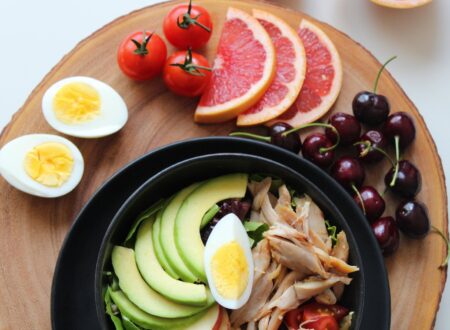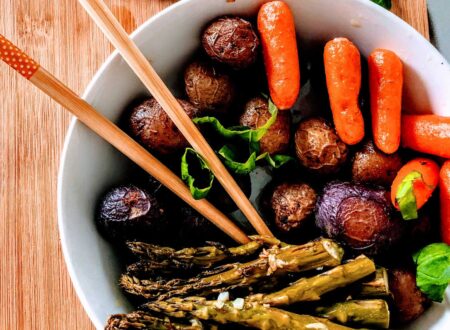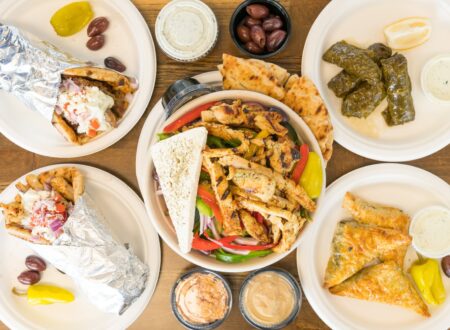Introduction
Food is more than just sustenance; it’s a vibrant tapestry woven from history, culture, and community. Every bite tells a story, echoing the traditions of generations before us. Across the globe, food serves as a bridge that connects people to their roots and to each other. Whether it’s sharing a meal at home or celebrating with street festivals, culinary practices foster unity in diverse ways.
As we embark on this flavorful journey through different cultures, prepare your senses for an exploration of recipes steeped in tradition. Experience how delightful flavors bring families together and create lasting memories around the table. From Asian delicacies bursting with umami to Latin American dishes rich in heritage, let’s savor the essence of global cuisines that celebrate life itself.
A. The significance of food in different cultures
Food is more than mere sustenance; it’s a reflection of identity and heritage. Each culture weaves its history into the flavors and ingredients used in traditional dishes. From Mediterranean olive oil to Indian spices, every bite tells a story.
Meals often carry deep spiritual meanings too. In many societies, food rituals mark important life events—births, weddings, and funerals alike. These gatherings are not just about eating; they’re about sharing love and support.
Different cultural practices also highlight the significance of food as an art form. The meticulous preparation of sushi or the vibrant presentation of Mexican tamales showcases creativity shaped by tradition.
Moreover, food can bridge gaps between generations. Recipes passed down through families create connections that span decades, allowing ancestors’ legacies to live on in each delicious dish served around tables worldwide.
B. How it brings communities together
Food acts as a universal language. It transcends barriers and speaks to our shared humanity. When communities gather around a meal, differences fade away.
Think of family reunions or neighborhood potlucks. Dishes from diverse backgrounds sit side by side on the same table, inviting exploration and conversation. Each bite tells a story of heritage, struggle, and triumph.
In many cultures, food is at the heart of celebrations—birthdays, weddings, or festivals draw people together. These gatherings not only strengthen bonds but also create lasting memories.
Cooking together fosters collaboration too. Families teach children traditional recipes passed down through generations while friends experiment with new flavors side by side. This act nurtures relationships and builds understanding within communities.
Through sharing meals, we embrace diversity in an impactful way that nourishes both body and soul. The communal experience ignites friendships that may last a lifetime.
Exploring Asian Cuisine
Asian cuisine is a tapestry woven from rich history and diverse traditions. Each country boasts its own unique flavors, ingredients, and cooking methods that reflect centuries of cultural evolution.
Chinese cuisine stands out with its balance of taste and color. Staples like rice and noodles are often paired with fresh vegetables and proteins to create vibrant dishes. Traditional techniques such as stir-frying or steaming bring life to these meals.
Dumplings, Peking duck, and mapo tofu are just a few examples that entice the palate. Spices play essential roles in enhancing each dish’s complexity while celebrating regional nuances.
Moreover, neighboring countries contribute their culinary influences. Thai herbs add zing to traditional Chinese fare; Japanese umami blends seamlessly into Korean dishes. This interconnectedness creates an exciting culinary landscape filled with endless possibilities for exploration.
A. History and traditions of Chinese cuisine
Chinese cuisine boasts a rich tapestry of history, weaving together millennia of tradition and innovation. Its roots trace back to ancient dynasties where food was not merely sustenance but an art form that reflected philosophical beliefs.
Each region in China has its own culinary identity shaped by geography, climate, and culture. For instance, the bold flavors of Sichuan dishes contrast sharply with the delicate tastes found in Cantonese cooking.
Traditions play a vital role during festivals and family gatherings. Dishes are often prepared with symbolic meanings—noodles for longevity or fish for prosperity.
Cooking techniques have evolved as well, from stir-frying to steaming, each method influencing flavor profiles uniquely. This evolution continues today as chefs blend traditional recipes with modern twists while preserving their heritage’s essence in every bite.
B. Popular dishes and ingredients
Chinese cuisine boasts a rich variety of popular dishes, each reflecting the region’s culinary heritage. From the iconic Peking duck to comforting bowls of wonton soup, every bite tells a story.
Staples like rice and noodles serve as foundations for many meals. Dishes such as fried rice or chow mein are beloved worldwide. They highlight how simple ingredients can create something extraordinary.
Fresh vegetables play a crucial role too. Bok choy, snow peas, and scallions add color and nutrition to plates. Meanwhile, sauces like soy sauce and oyster sauce bring depth and umami flavor.
Spices may not be dominant in Chinese cooking but ginger, garlic, and five-spice powder elevate dishes with subtle warmth. Each ingredient works harmoniously to create vibrant flavors that satisfy both hunger and curiosity about culture through food.
C. Influences from neighboring countries
Asian cuisine is a vibrant tapestry woven from the flavors and traditions of its many neighboring nations. Each country contributes unique ingredients, techniques, and culinary philosophies that enrich this diverse landscape.
Take Thai cuisine, for example. Its bold use of herbs and spices often influences Malaysian dishes. The fresh cilantro, lemongrass, and chilies create an aromatic experience that both cultures cherish.
Similarly, Indian curry has made waves across the region. Countries like Nepal and Bangladesh have adapted these rich flavors into their own food practices while still honoring traditional recipes.
Japan’s sushi culture also finds echoes in Korean cooking through similar methods of fermentation and preservation. Kimchi shares a kinship with pickled vegetables commonly found in Japanese meals.
This cross-pollination not only results in delicious fusion dishes but also fosters deeper cultural exchanges among people who savor them together.
Savoring Latin American Flavors
Latin American cuisine bursts with vibrant flavors and rich traditions. Staple ingredients like rice, beans, and corn form the foundation of many beloved dishes. They carry stories of culture and history from generation to generation.
Cooking techniques vary widely across the region. From slow-cooked stews to quick-fire grilling, every method brings out distinct tastes. The sizzle of a fajita captures attention just as much as the aroma of a pot of feijoada simmering on the stove.
Spices play an essential role too. Cumin, cilantro, and chili peppers create mouthwatering profiles that dance on the palate. Each bite evokes memories tied to family gatherings or festive celebrations.
Food is not merely sustenance; it’s central in holidays and festivals throughout Latin America. Dishes served during these events often celebrate heritage while inviting friends and families to share in joy together.
A. Traditional staples such as rice, beans, and corn
Rice, beans, and corn form the backbone of many Latin American diets. These staples are not just food; they represent history and tradition. Each grain tells a story of cultivation passed down through generations.
Rice serves as a canvas for countless dishes. It’s fluffy or sticky, depending on the region and preparation. Whether it’s served with black beans in Cuba or as part of paella in Spain, rice brings versatility to every meal.
Beans offer rich protein and flavor diversity. From pintos to black beans, each type carries its unique taste profile that enhances stews and salads alike. They’re often slow-cooked with spices that elevate their natural essence.
Corn is perhaps the most celebrated staple, especially in Mexico where it forms tortillas—the foundation of countless meals. Its transformation into tamales and elotes showcases ingenuity while connecting communities around shared culinary traditions.
B. Unique cooking techniques and spices
Latin American cuisine is a treasure chest of unique cooking techniques and vibrant spices. Each method tells a story, reflecting the land and its people.
One standout technique is slow-cooking, often done in clay pots or earthenware. This allows flavors to meld beautifully over time, creating rich stews that are bursting with taste.
Grilling also holds a special place in many cultures across the region. Whether it’s carne asada or grilled corn on the cob, the smoky aroma brings communities together around outdoor gatherings.
Spices play an equally vital role. Cumin and achiote add depth to dishes while fresh herbs like cilantro brighten flavors instantly. The use of chili peppers varies widely; some regions favor heat while others lean toward smokiness.
These methods and ingredients create an unforgettable culinary experience that transcends borders and generations.
C. The importance of food in celebrations and festivals
Food plays a pivotal role in celebrations and festivals across Latin America. Each dish tells a story, steeped in history and cultural significance.
Take the Day of the Dead in Mexico, for example. Families gather to honor loved ones with altars adorned with favorite foods like pan de muerto (a special bread) and sugar skulls. These offerings are not merely about sustenance; they embody respect and remembrance.
Similarly, during Carnival season, vibrant feasts emerge throughout Brazil. Dishes such as feijoada—a hearty black bean stew—are enjoyed among friends and family, creating bonds that last beyond the festivities.
In many cultures within this region, food is intertwined with ritualistic practices. From Thanksgiving-style gatherings to traditional weddings featuring multiple courses that celebrate heritage—each meal becomes an act of love and community spirit.
The conversations around tables filled with rice dishes from Peru or empanadas from Argentina foster connections. They create memories etched into hearts just as deeply as any tradition passed through generations.
Through shared meals at these events, people express gratitude for their roots while embracing diversity within their communities. This celebration of flavors unites individuals under a common goal: to savor life’s moments together through culinary experiences rich in meaning.
As we explore these global cuisines, it’s clear that food extends far beyond nourishment—it’s a powerful medium linking us all across different cultures.





